The nematode worm C. elegans chooses between bacterial foods as if maximizing economic utility
- PMID: 37096663
- PMCID: PMC10231927
- DOI: 10.7554/eLife.69779
The nematode worm C. elegans chooses between bacterial foods as if maximizing economic utility
Abstract
In value-based decision making, options are selected according to subjective values assigned by the individual to available goods and actions. Despite the importance of this faculty of the mind, the neural mechanisms of value assignments, and how choices are directed by them, remain obscure. To investigate this problem, we used a classic measure of utility maximization, the Generalized Axiom of Revealed Preference, to quantify internal consistency of food preferences in Caenorhabditis elegans, a nematode worm with a nervous system of only 302 neurons. Using a novel combination of microfluidics and electrophysiology, we found that C. elegans food choices fulfill the necessary and sufficient conditions for utility maximization, indicating that nematodes behave as if they maintain, and attempt to maximize, an underlying representation of subjective value. Food choices are well-fit by a utility function widely used to model human consumers. Moreover, as in many other animals, subjective values in C. elegans are learned, a process we find requires intact dopamine signaling. Differential responses of identified chemosensory neurons to foods with distinct growth potentials are amplified by prior consumption of these foods, suggesting that these neurons may be part of a value-assignment system. The demonstration of utility maximization in an organism with a very small nervous system sets a new lower bound on the computational requirements for utility maximization and offers the prospect of an essentially complete explanation of value-based decision making at single neuron resolution in this organism.
Keywords: C. elegans; chemosensation; decision making; foraging behavior; neuroeconomics; neuroscience; subjective value; transitivity.
© 2023, Katzen et al.
Conflict of interest statement
AK, HC, WH, CD, NJ, EG, CT, SY, SF, PG, JA No competing interests declared, SL is co-founder and Chief Technology Officer of InVivo Biosystems, Inc, which manufactures instrumentation for recording electropharyngeograms
Figures



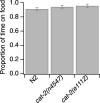
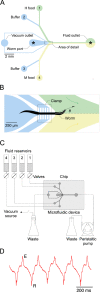
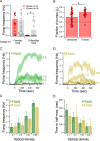
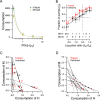

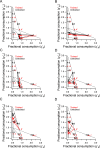
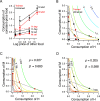

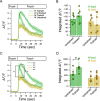




Update of
- doi: 10.1101/2021.04.25.441352
Similar articles
-
Sensory neurons couple arousal and foraging decisions in Caenorhabditis elegans.Elife. 2023 Dec 27;12:RP88657. doi: 10.7554/eLife.88657. Elife. 2023. PMID: 38149996 Free PMC article.
-
Bounded rationality in C. elegans is explained by circuit-specific normalization in chemosensory pathways.Nat Commun. 2019 Aug 13;10(1):3692. doi: 10.1038/s41467-019-11715-7. Nat Commun. 2019. PMID: 31409788 Free PMC article.
-
Chemosensory signaling in C. elegans.Bioessays. 1999 Dec;21(12):1011-20. doi: 10.1002/(SICI)1521-1878(199912)22:1<1011::AID-BIES5>3.0.CO;2-V. Bioessays. 1999. PMID: 10580986 Review.
-
Exploratory decisions of the Caenorhabditis elegans male: a conflict of two drives.Semin Cell Dev Biol. 2014 Sep;33:10-7. doi: 10.1016/j.semcdb.2014.06.003. Epub 2014 Jun 23. Semin Cell Dev Biol. 2014. PMID: 24970102 Review.
-
Irrational behavior in C. elegans arises from asymmetric modulatory effects within single sensory neurons.Nat Commun. 2019 Jul 19;10(1):3202. doi: 10.1038/s41467-019-11163-3. Nat Commun. 2019. PMID: 31324786 Free PMC article.
Cited by
-
Navigation strategies in Caenorhabditis elegans are differentially altered by learning.PLoS Biol. 2025 Mar 21;23(3):e3003005. doi: 10.1371/journal.pbio.3003005. eCollection 2025 Mar. PLoS Biol. 2025. PMID: 40117298 Free PMC article.
-
The role of food odor in invertebrate foraging.Genes Brain Behav. 2022 Feb;21(2):e12793. doi: 10.1111/gbb.12793. Epub 2022 Jan 2. Genes Brain Behav. 2022. PMID: 34978135 Free PMC article. Review.
-
C. elegans foraging as a model for understanding the neuronal basis of decision-making.Cell Mol Life Sci. 2024 Jun 8;81(1):252. doi: 10.1007/s00018-024-05223-1. Cell Mol Life Sci. 2024. PMID: 38849591 Free PMC article. Review.
-
An efficient behavioral screening platform classifies natural products and other chemical cues according to their chemosensory valence in C. elegans.bioRxiv [Preprint]. 2024 Apr 3:2023.06.02.542933. doi: 10.1101/2023.06.02.542933. bioRxiv. 2024. PMID: 37333363 Free PMC article. Preprint.
-
The Sentient Cell: Implications for Osteopathic Medicine.Cureus. 2024 Feb 20;16(2):e54513. doi: 10.7759/cureus.54513. eCollection 2024 Feb. Cureus. 2024. PMID: 38384870 Free PMC article. Review.
References
-
- Afriat SN. The construction of utility functions from expenditure data. International Economic Review. 1967;8:67. doi: 10.2307/2525382. - DOI
-
- Afriat SN. Efficiency estimation of production functions. International Economic Review. 1972;13:568–598. doi: 10.2307/2525845. - DOI
-
- Andreoni J, Miller J. Giving according to GARP. Econometrica: Journal of the Econometric Society. 2002;70:737–753. doi: 10.1111/1468-0262.00302. - DOI
Publication types
MeSH terms
Substances
Grants and funding
LinkOut - more resources
Full Text Sources
Research Materials

